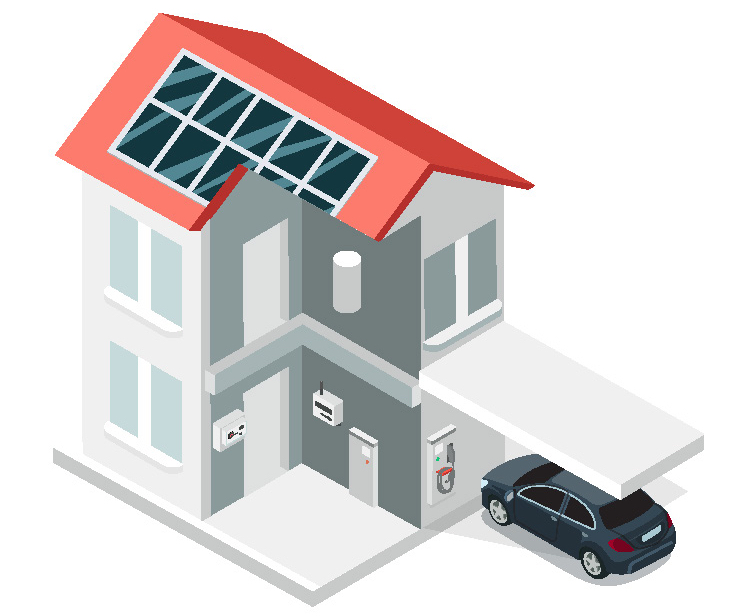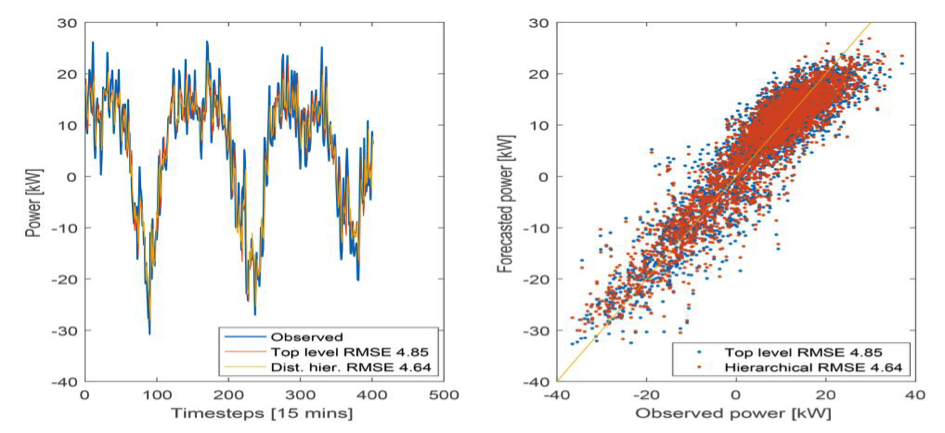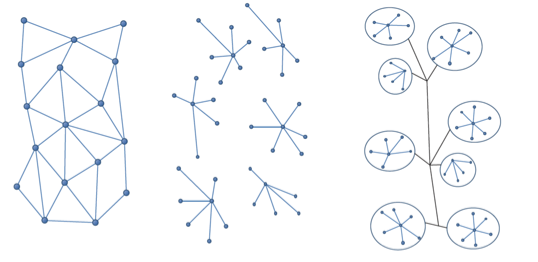Aim
 |
Provide the grid stakeholders with the means required for the optimum management of the power system. Provide the DSO with new tariff schemes and business models. |
Activities
Distributed DSM algorithms that use communication and new forecasting models
An aggregator-based distributed algorithm for the coordination of flexible prosumers in the distribution grid and a dynamic setting, exploiting hierarchical forecasts, is being developed. Each prosumer is modelled as a rational agent who wants to minimize a certain (and a-priori unknown) utility function, e.g. economic costs, by controlling an energy buffer (for example an electric battery). Under this assumption, each agent communicates its planned actions to an aggregator. At the aggregator, the algorithm implements a welfare maximization problem (aiming at minimizing prosumers costs) that takes into account electrical grid constraints (bounded power and voltages in some nodes of the network). The decomposition algorithm exploits the Alternating Direction Method of Multipliers (ADMM) formulation of the Sharing problem, allowing to jointly optimize a system-level objectives (e.g. target power tracking or peak shaving). The aggregator sends back each prosumer a coordination signal that helps the prosumers maximizing their utility function, while trying to mitigate voltage fluctuations and power congestions.
Day-ahead prediction
A distributed implementation of hierarchical forecasting is being developed. Hierarchical forecasting starts from a set of so called ‘base forecasts’, which are the forecasts of loads at the household level and at different aggregation levels. From these signals, a central entity retrieves a set of aggregate-consistent forecasts. Base forecasts are then corrected to obtain of more coherent and accurate set. This method allows agents’ forecasts to improve the forecast of the aggregated power while preserving their privacy. The hierarchical distributed implementation is obtained by means of decomposition techniques (modification of dual ascent optimization). Figure 1 shows an example of the kind of hierarchical structure considered.

Figure 1: An example of considered hierarchical structure. Each forecast of the nodes in the upper level is the aggregation of the forecasts of its children nodes.
Business models
Several business models are presented, with particular attention to the role of actors/stakeholders, key points in terms of regulatory framework and economics.
In particular, 5 cases are analyzed:
- The business-as-usual case, in which loads are not controlled and no storage are present
- Decentralized locally controlled loads. Prosumers are considered to be selfish agents with different utility functions
- DSO planned: the DSO exploits prosumers’ flexibility directly controlling their appliances. Convenient tariff schemes are offered to prosumers allowing Direct Load Control.
- Decentralized control based on voltage tariffs (Gridsense extension)
- Peer-to-peer energy markets and self consumption communities
Guidelines are obtained that sketch out and discuss the market design for the selected business models, in collaboration with ERANet SG+ NEMoGrid project
Communication specifications
The various communication specifications among GridSense and GridEye were analyzed based on the following aspects:
- Security
- Rights management
- Server certificate
Therefore, a local InfluxDB was installed and configured for analyzing the overall security and the questions regarding the rights management of the open source version compared to the paid enterprise version.
As a next step, the central server will be configured and based on the findings of the InfluxDB security analysis, the following points will be investigated:
- Port rules
- Access rules (SSH & InfluxDB configuration)
- Processes (Maintenance, user and certificate management)
- Reverse proxy for additional security and data integrity
Preliminary Results
DEVICE
Users engagement strategy has been modified in order to increase their participation into the project. This means that instead of launching a call for participation via post to the customers of the demonstration site, Romande Energie has established close collaboration with local authorities (Municipality of Rolle and Mont-sur-Rolle) with the establishment of a common communication plan.
By end of March 2018, joint public event will be held targeting the concerned habitants of Rolle, particularly owners/administrators of residential, commercial and public buildings.
By end of May 2018, the (first) DSM information will be accessible.
METHODOLOGIES
Distributed DSM algorithms that use communication and new forecasting models
The application of this method the results in terms of efficiency of resources utilization as expressed in Aggregated power (p.u) and Battery energy use were better in Cooperative than selfish behavior. Figure 2 compares the solution obtained when agents assume a selfish behavior with the one obtained with a collaborative approach.

Figure 2: In each figure, left panels show: in yellow: uncontrolled aggregated power flow. Blue: aggregated power flow after prosumers’ actions. Red: max power constraint for aggregated profile. Right panels show the energy of prosumers’ controlled batteries. Left: Selfish agents which do not coordinate
Day-ahead prediction
Data from a previous pilot project, consisting of 4 houses in the same low voltage feeder were used for a preliminary assessment of the approach. The total consumption and production of the 4 houses in the next 15 minutes was forecasted using a single regressor and then compared with the hierarchical approach. Random forests were used as regressors.
By comparing the hierarchical forecasting method to a top level one, the former performs better in terms of root-mean-square error (RMSE). Figure 3 shows a comparison of the base forecast of the top level of the hierarchy and the one obtained with distributed hierarchical forecast.

Figure 3: Comparison of base forecasts of the top level and the one obtained with distributed hierarchical forecasts. Left: time series for 3 days. Right: scatter plot of the 6 months dataset.
Business models
An analysis of the European regulatory framework was conducted, in view of the integration of new technologies into the electricity system as well as the development of a more decentralised system with new players (firstly prosumers, maybe within a peer-to-peer market, and aggregators) and a reshaping of the role of DSO. Barriers and opportunities for new business models were identified. Figure 4 shows different communication structures that can be exploited by different business models.
Guidelines for the definition of a well-designed market that encourages economically efficient solutions, promotes innovation and maximizes grid security with the inclusion of demand response, distributed generation and distributed storage are being drafted. For the market design, a number of policy scenarios are being analyzed. Criteria for the design of tariffs compatible with the proposed market structures are being defined. The objectives will encompass the end-user and distribution system operator (DSO) costs as well as equity criteria. The regulatory framework for blockchain based solutions is being analyzed.

Figure 4: Different types of connectivity graphs for new business models: P2P, islanded, self-consumption communities
Communication specifications
The outcomes of this analysis are the following:
- InfluxDB can be configured using HTTPS only
- The server certificate can be either bought or self-signed. Both variants are acceptable with the difference that self-signed public keys should be distributed to the clients manually.
- The paid version has detailed rights management versus the coarsely granular one in the open source version.
- As a similar rights management can be established using multiple databases, there is not any obstacle using the open source version.
- One downside is that InfluxDB does not support mutual authentication, therefore the user passwords should be long and complex.
- For a better control of security relevant aspects, an additional component could be added in front of the database to proxy and filter the requests.
Involved partners/Contacts
 |
DSM: |
 |
Communication specifications: |